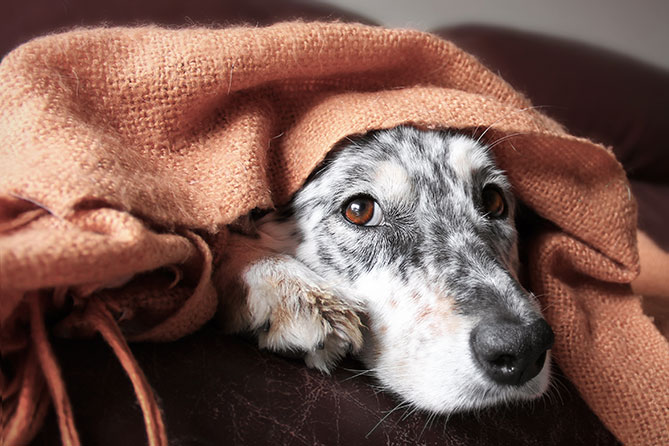If you’ve rescued a dog, it can often be the case that they have had a chequered history and may not behave as you would wish. You may be disappointed as they shy away from attention and love from you, they may freak out on a walk, and their house training may seem like a long lost dream, and they may spend their day hiding away from you.
Or you may be considered a shelter dog, and are concerned about not knowing how it may behave, due to past experiences.
It’s always important to understand that these strange behaviours may have been shaped by past experiences that have been traumatic, and so the process for turning them around can be long process that requires a lot of patience and understanding. But the good news is, it is possible!
So how do you manage these dogs so that they can eventually trust you and you can both enjoy life together? Dr Frank McMillan of Best Friends Animal Society has carried out research into what does and doesn’t help when transitioning these pets to a new adoptive home.
These are the top 3 things that he found that consistently work. But a word of caution, every pet is individual and what works for one, may not work for another. It does really come down to trial and error. If something works, continue doing it. If it doesn’t work – STOP – because to continue will just create a set back!
The top 3 things that work
1.Patience & Attitude
First and foremost it is about allowing the dog to go at it’s own pace. No pressure should be applied and give the dog as much time as he or she needs to adjust to the new surroundings. It is important to be encouraging, provide reassurance and positive reinforcement. Be consistent and calm and be prepared not to rush things, giving it time.
2.Another Dog in the Family
The second most important thing that can help the dog succeed is having another well-adjusted, socialised dog in the family who they can observe and learn from. A well behaved, well mannered and well socialised companion for the dog will not be a threat and will provide a great role model for the dog to learn “how to be a dog”! Please note that it would not make sense to get a second dog with issues, and they will reinforce each other’s behaviour.
In addition Dr MacMillan suggests that a second dog takes on some of the attention from the family, meaning that the interactions are a less intense and it is also easier for the adopter as they will have another dog around who is a willing recipient of their loving attention.
It is important to remember that intensity can be uncomfortable for these dogs, and for them there is “safety in numbers”.
Once the dog seems to be settling down you can try on- on-ones, to get them more adjusted to you.
According to Your Pet Advisor, to ensure a successful integration with another pet, it is important to keep separate area for your new pet. So they have their own food and area for eating, separate sleeping area – keep these areas private so that they can feel comfortable and safe when they are eating, and it shows any other pets the boundaries in the household. This is a very important part of making a successful introduction.
3.Love, Affection & TLC
When giving love and affection it is important to remember in the first instance that for these dogs, people are not necessarily a source of safety. Love may be a foreign concept, and could be scary. So the key is to go slowly, be calm, move softly and no surprises. If the dog rejects you, that is OK – never force. Just be patient!
What is Least Helpful?
Probably the worst thing you can do is be stern, have a raised voice or apply physical punishment to the dog. The most likely outcome from this is that you will set them back. Even if they are doing things that are “bad” or extremely annoying – like house training, remember that being loud can be experienced as a traumatic event for such dogs, and they really do not do bad things on purpose.
Do not force them to socialise too soon either with other dogs or people. This would take them way out of their comfort zone and again could result in a set back.
Other examples of what could be a scary event is for the dog being left at a groomer all day, or any other strange environment – rather think about getting the groomer to come to the house if a groom is necessary. Or even going on a walk could be a traumatic experience for a dog that has not experienced that before.
The Take Out
There are really no rules, and different things will work for different dogs, depending on their experiences, and how long they may have endured mis-treatment. Always be willing to try alternatives and to abandon anything that seems to create fear and angst (and doesn’t work).
You will need to be observant, patient, and put in time and once you have earned the trust of your new four legged friend, the rewards will come back to you in spades!
Do you have an experience with a rescue pet that you can share with us, for the benefit of others?







Leave A Comment